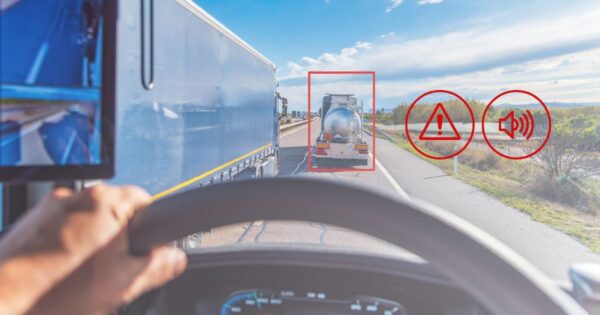When fleet owners first install video telematics systems — like multi-camera setups, dash cams, and smart tracking tools — they’re often stepping into the unknown. There’s curiosity, some scepticism, and plenty of “let’s see if this is worth it” moments.
And that’s fair. It all comes down to choosing the right solution. Because while something is better than nothing, at some point in those first few months, nearly every fleet manager experiences a pivotal moment.
They ask themselves: “What if I didn’t have that footage?”
That single question has become so common in the industry, it’s now known as the “what if” principle – a turning point that often redefines how businesses view video telematics. It’s not just about having footage; it’s about what that footage makes possible.
Here’s what typically happens in the first six months after installation:
Month 1–2: the adjustment period
The early weeks can feel like a learning curve.
Drivers may push back. Cameras can be seen as intrusive, or as a sign of mistrust. Managers may feel overwhelmed. There’s a lot to take in—alerts, reports, video clips. It’s a shift.
It’s normal to question whether the investment will be worth it—or to worry the technology might create more noise than results.
But this period is about building understanding. That video telematics isn’t about catching people out—it’s about protecting them. And at CameraMatics, we’re with you every step of the way, offering hands-on support, training, and best practices to make the transition as smooth as possible.
Month 3–4: the turning point
Then – something happens. A complaint. A near-miss. A crash. Or, tragically, a serious or fatal incident.
This is the moment the value of video telematics becomes crystal clear.
Take the experience of McCulla, a fleet operator using the CameraMatics system. As Managing Director Brian Beattie recalls:
“It was a Saturday morning, and I received a call from one of our drivers who was in Northern France. Another driver had come across two lanes of traffic and crashed into the rear of our truck. Unfortunately, that driver was killed on impact and there were no witnesses to the incident, so the French police were looking to arrest our driver until the circumstances could be clarified.”
“The CameraMatics system really saved us that day for two reasons. Firstly, we had rear-facing cameras, so the system captured the whole incident. Secondly, thanks to remote access to the footage on the vehicle, we were able to access the video, download it, and forward it to the French authorities within the hour. The footage totally exonerated our driver, and although shaken, he was able to make his way home rather than spending a day or more in a French cell.”
“Obviously we were concerned for our driver and wanted to make sure he was looked after. But in doing that, it also meant we avoided significant delays, as our vehicle was also released rather than being impounded.”
Situations like this—unexpected, high-stakes, and deeply human – are what redefine video telematics from a “nice-to-have” to an essential safeguard.
The footage shows your driver wasn’t at fault. It highlights risky behaviour that needs to be addressed. It saves hours—or even days—of back-and-forth, admin, and stress. And when it comes to insurance claims, video telematics streamlines the First Notification of Loss (FNOL) process. By providing immediate access to incident footage, as demonstrated above with McCulla, it enables faster, more accurate reporting, helping to reduce claim costs and expedite resolutions.
And that’s when the question hits: “What if I didn’t have this technology?”
It’s no longer a hypothetical. It’s real – and it’s a turning point. The system stops being a cost on a balance sheet and becomes a crucial tool. Legally. Financially. Operationally.
Month 5–6: the system becomes a strategic asset
By now, most fleet operators have stopped seeing video telematics as just a safety measure—and started seeing it as a strategic asset.
Training is smarter. Real footage turns into powerful coaching opportunities. Driver attitudes shift. Many now value the cameras as protection, not punishment.
Costs begin to fall. Fewer accidents mean lower premiums, less downtime, and smaller claims. And with safer driving habits, fuel usage drops too – often one of the biggest expenses in fleet operations.
Fleet managers move from reacting to problems, to proactively preventing them. The culture evolves. The benefits compound.
Final thought: expect the unexpected, and be prepared
If you’re new to video telematics or still weighing it up, remember this: the “what if” principle doesn’t hit you in theory—it hits you in action.
It only takes one moment. One incident. One challenge you didn’t see coming.
And when that moment comes, you won’t be asking “what if I had that footage?”
You’ll be grateful that you do.
With CameraMatics, you won’t just have the footage – you’ll have the tools, support, and insights to be prepared when it matters most. Get in touch today and take that first step.









